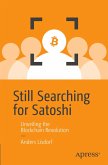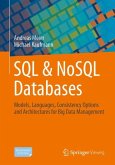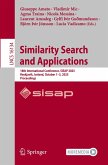Demystify Blockchain Plain Language, Real-World Impact
Blockchain is transforming industries, reshaping finance, and redefining trust in the digital age. But what exactly is it, and why does it matter? Blockchain Basics, Second Edition gives you the answers in 30 clear, concise steps designed for readers who want understanding without complexity.
This updated and expanded edition goes beyond the fundamentals to explore the latest developments, including Proof of Stake, Smart Contracts, Blockchain Oracles, Tokenization and NFTs, Decentralized Finance (DeFi), Cryptocurrencies, and Stablecoins. Each concept is explained in plain language, using analogies and illustrations instead of math formulas or programming jargon. No prior knowledge of computer science, cryptography, or coding is required.
Whether you re a business leader, investor, consultant, or simply curious about the technology shaping tomorrow s economy, this book bridges the gap between technical detail and practical application. You ll learn what blockchain is, why it s needed, the problems it solves, and how it s being applied in real-world scenarios from financial systems to commercial innovation.
If you want a straightforward, conversational guide that demystifies blockchain and shows its relevance to business and society, this is your starting point. By the end, you ll not only understand the technology you ll see its potential to change the way the world works.
ABOUT THE AUTHOR
Daniel Drescher is an experienced banking professional who has held positions in securities trading in a range of banks. Amongst others, Daniel holds a Doctorate in Econometrics from the Technical University of Berlin and an MSc in Software Engineering from the University of Oxford.
Blockchain is transforming industries, reshaping finance, and redefining trust in the digital age. But what exactly is it, and why does it matter? Blockchain Basics, Second Edition gives you the answers in 30 clear, concise steps designed for readers who want understanding without complexity.
This updated and expanded edition goes beyond the fundamentals to explore the latest developments, including Proof of Stake, Smart Contracts, Blockchain Oracles, Tokenization and NFTs, Decentralized Finance (DeFi), Cryptocurrencies, and Stablecoins. Each concept is explained in plain language, using analogies and illustrations instead of math formulas or programming jargon. No prior knowledge of computer science, cryptography, or coding is required.
Whether you re a business leader, investor, consultant, or simply curious about the technology shaping tomorrow s economy, this book bridges the gap between technical detail and practical application. You ll learn what blockchain is, why it s needed, the problems it solves, and how it s being applied in real-world scenarios from financial systems to commercial innovation.
If you want a straightforward, conversational guide that demystifies blockchain and shows its relevance to business and society, this is your starting point. By the end, you ll not only understand the technology you ll see its potential to change the way the world works.
ABOUT THE AUTHOR
Daniel Drescher is an experienced banking professional who has held positions in securities trading in a range of banks. Amongst others, Daniel holds a Doctorate in Econometrics from the Technical University of Berlin and an MSc in Software Engineering from the University of Oxford.








